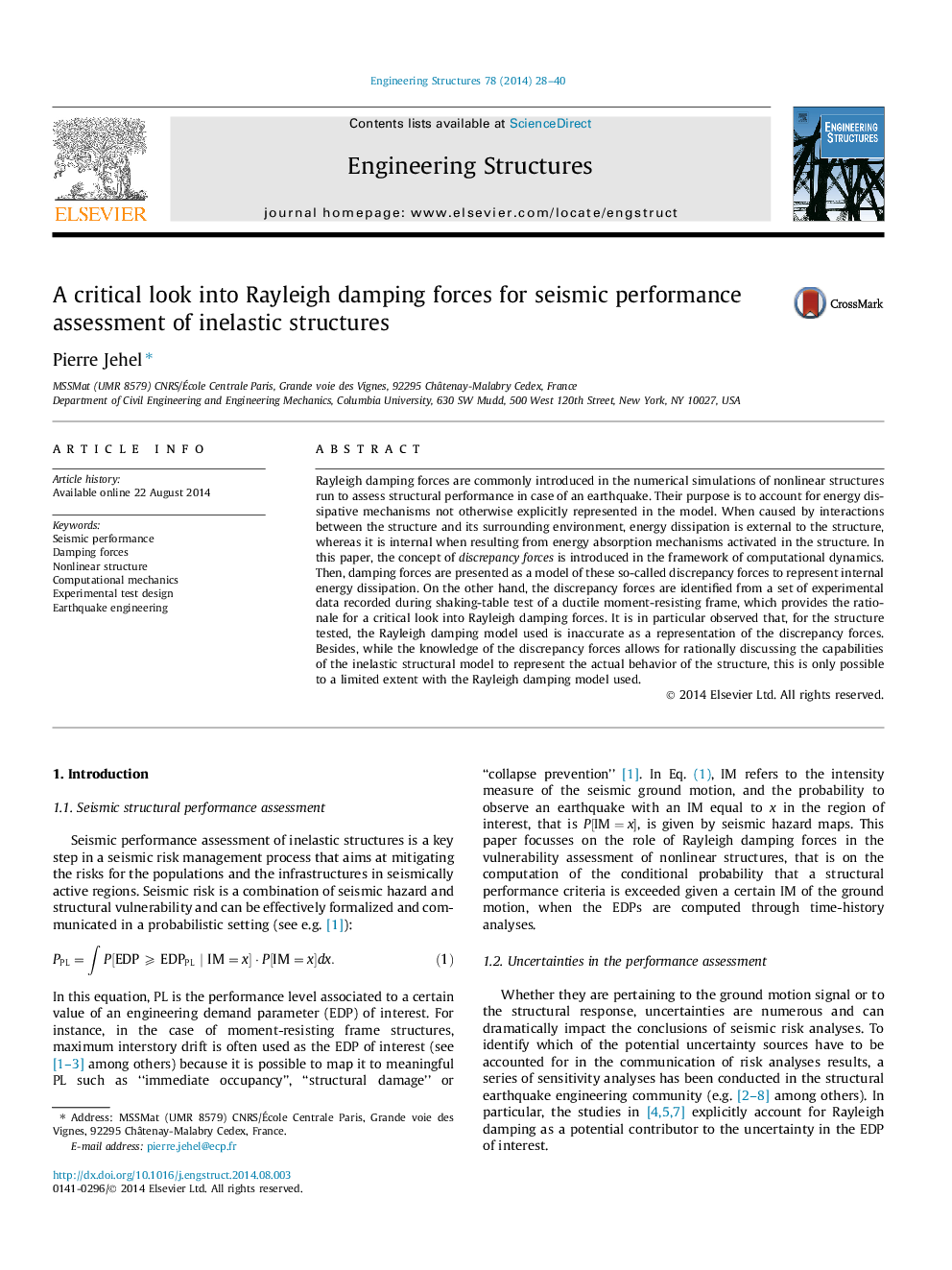| Article ID | Journal | Published Year | Pages | File Type |
|---|---|---|---|---|
| 266477 | Engineering Structures | 2014 | 13 Pages |
•The general concept of discrepancy forces in computational dynamics is introduced.•Discrepancy forces provide rationale for critical analysis of Rayleigh damping.•Experimental data are used to acquire better knowledge of Rayleigh damping.•Structural response models cannot be rationally studied with Rayleigh damping.
Rayleigh damping forces are commonly introduced in the numerical simulations of nonlinear structures run to assess structural performance in case of an earthquake. Their purpose is to account for energy dissipative mechanisms not otherwise explicitly represented in the model. When caused by interactions between the structure and its surrounding environment, energy dissipation is external to the structure, whereas it is internal when resulting from energy absorption mechanisms activated in the structure. In this paper, the concept of discrepancy forces is introduced in the framework of computational dynamics. Then, damping forces are presented as a model of these so-called discrepancy forces to represent internal energy dissipation. On the other hand, the discrepancy forces are identified from a set of experimental data recorded during shaking-table test of a ductile moment-resisting frame, which provides the rationale for a critical look into Rayleigh damping forces. It is in particular observed that, for the structure tested, the Rayleigh damping model used is inaccurate as a representation of the discrepancy forces. Besides, while the knowledge of the discrepancy forces allows for rationally discussing the capabilities of the inelastic structural model to represent the actual behavior of the structure, this is only possible to a limited extent with the Rayleigh damping model used.
